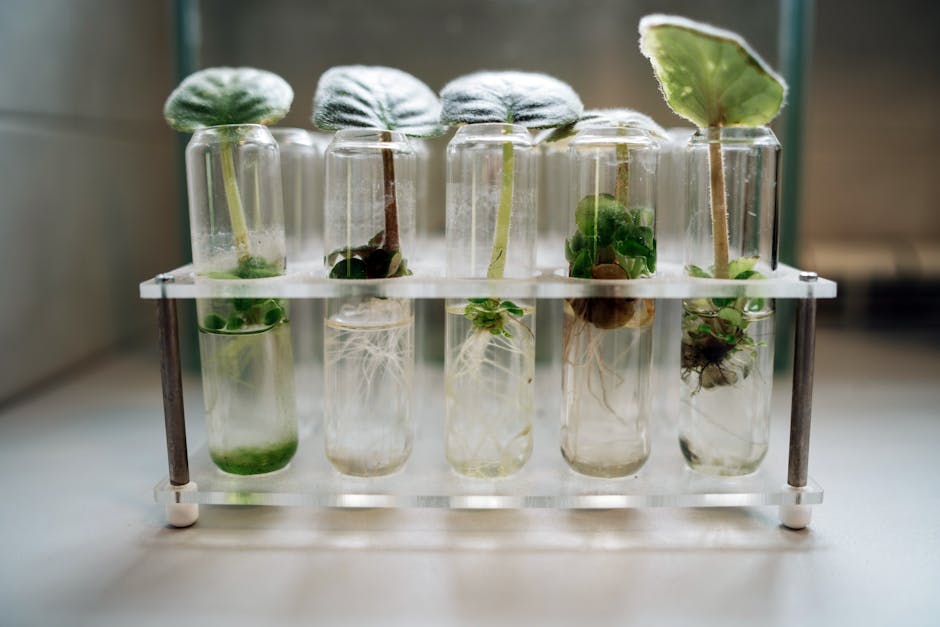Understanding Different Propagation Methods
Understanding Different Propagation Methods
Blog Article

Efficient plant propagation is a fundamental skill for both novice and seasoned gardeners. The ability to create new plants from existing ones not only enhances your garden but also saves resources and time. By mastering effective methods for plant propagation, you can expand your plant collection, share with friends, or even create a thriving home nursery. In this article, we will explore various propagation methods, provide step-by-step guides for popular plants, and highlight common mistakes to avoid to ensure successful results.
Understanding Different Propagation Methods
There are several methods for propagating plants, each with its own advantages and suitability depending on the species. The most common methods include:
- Seed Propagation: This is the most natural way to propagate plants, where seeds are collected from a parent plant and sown to grow new individuals.
- Cuttings: This method involves taking a part of the plant, such as a stem or leaf, and encouraging it to develop roots.
- Division: Suitable for perennial plants, division involves separating a mature plant into smaller sections, each capable of growing independently.
Step-by-Step Guides for Popular Plants
Seed Propagation
Seed propagation is a rewarding process. Here’s a simple guide:
- Select Quality Seeds: Choose seeds from healthy plants or reputable sources.
- Prepare Seed-Starting Mix: Use a light, well-draining mix. Moisten it before filling your containers.
- Sow Seeds: Plant seeds according to the depth recommended on the seed packet. Cover lightly with soil.
- Water Gently: Use a spray bottle to moisten the soil without washing away the seeds.
- Provide Light and Warmth: Place containers in a warm location with indirect sunlight until seeds germinate.
Propagation by Cuttings
Cuttings are an efficient way to propagate many houseplants. Follow these steps:
- Choose a Healthy Cutting: Select a stem that is healthy and free of disease. A length of 4-6 inches is ideal.
- Prepare the Cutting: Remove lower leaves, leaving just a few at the top. This helps reduce moisture loss.
- Use Rooting Hormone (Optional): Dip the cut end in rooting hormone to encourage faster root development.
- Plant the Cutting: Place the cutting in a small pot filled with a well-draining mix. Water lightly.
- Create a Humid Environment: Cover the pot with a plastic bag or a clear container to maintain humidity, removing it occasionally to prevent mold.
Propagation by Division
Division is excellent for maintaining healthy plants and expanding your garden. Here’s how:
- Choose the Right Time: Late winter or early spring is best for most perennials.
- Remove the Plant: Carefully dig up the entire plant, taking care not to damage the roots.
- Separate the Clumps: Gently pull apart the root clumps with your hands or a garden fork, ensuring each division has roots and shoots.
- Replant Immediately: Place divisions in prepared soil, water well, and provide shade until they are established.
Common Mistakes to Avoid in Plant Propagation
While propagating plants can be straightforward, there are common pitfalls to watch out for:
- Overwatering: Too much water can lead to rot. Ensure proper drainage and only water when necessary.
- Insufficient Light: Lack of sunlight can hinder growth. Use grow lights if natural light is inadequate.
- Ignoring Temperature Needs: Different plants have specific temperature requirements for successful propagation. Research these needs beforehand.
- Using Poor Quality Soil: Always use a suitable growing medium to provide the essential nutrients and drainage.
Best Practices for efficient plant propagation
To enhance your success in efficient plant propagation, consider these best practices:
- Research the specific needs of the plants you wish to propagate.
- Keep a propagation journal to track your successes and any challenges faced during the process.
- Utilize quality materials and tools, such as sterilized containers and fresh potting mix.
- Stay patient and allow time for roots to develop, as some plants take longer than others.
With a solid understanding of efficient plant propagation methods, you can successfully grow new plants with minimal resources. Whether you choose seed propagation, cuttings, or division, the key lies in following the right steps and avoiding common mistakes. Happy propagating!
For more resources related to efficient plant propagation, consider exploring various plant options available at this link.
Report this page